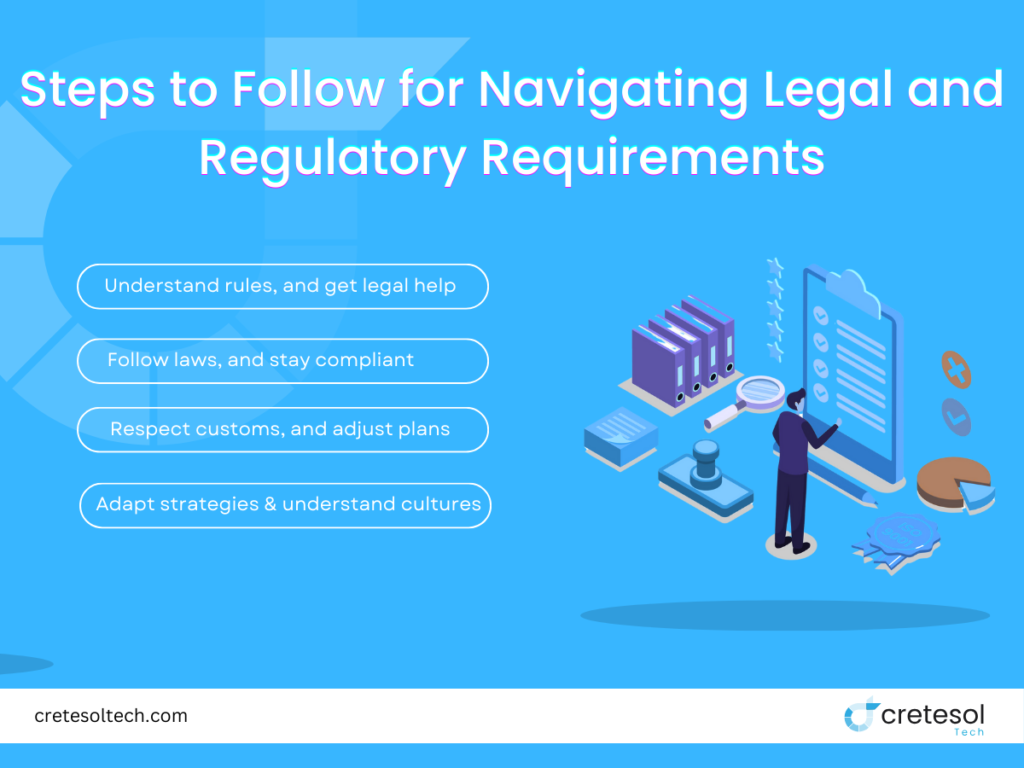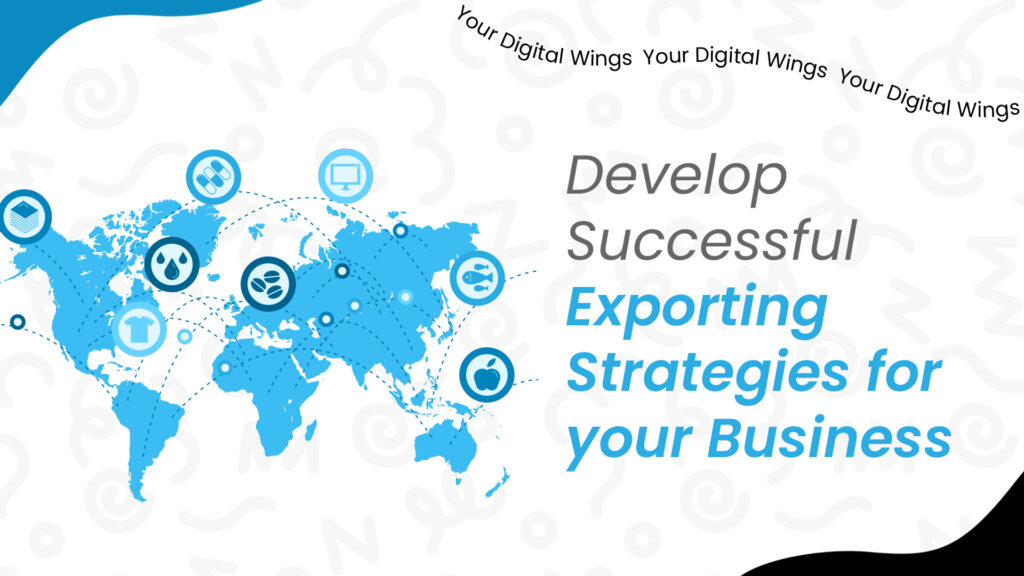Have you ever found something you love but can’t get because it’s unavailable in your country? That’s where exporting plays a role. Exporting is the easiest way to sell your brand internationally. Brands must earn money and fulfill customers’ demands, needs, and interests.
1. Understanding the Basics of Exporting
Exporting is the process of producing products and services in one country and supplying them to other countries, it gives customers access to purchase products from any part of the world. Exporting allows countries and companies to grow faster internationally. For Global growth exporting strategies are important because it opens up new opportunities and can increase your sales. This blog will clear your doubts and answer your questions if you are not sure about “How to start Exporting”.
Learn more about Proven International Marketing Strategies for Global Growth
2. Conducting Market Research
Before you start exporting, it’s important to research your target markets. Deep Market Research includes learning about customer preferences, market trends, and what your competitors are doing. Exporting needs proper market research to find out actually where you need to sell your products. Where is the high demand for your product? It ensures that your exporting strategies and efforts will not be wasted. Good research helps you make informed decisions. It tailor your offerings to meet international demand.
3. Assessing Export Readiness
It’s not compulsory to start exporting directly after conducting market research. Not every business is ready to export right away. You need to look at things like how much you can produce, your finances, and if your team is ready. Don’t go for it if it can indirectly affect your business. Make yourself capable of it first. Initially do a short test by exporting in different countries and then export in those from where you get good feedback. This helps you figure out what you need to do before you start selling internationally..
4. Developing an Export Plan
Having a plan makes sure everyone in your business is on the same page. A proper strategy and plan is the first step that exactly leads to your successful destination. A solid strategy is the first step to success. Include everything in the plan. From market research to logistics, and follow it diligently for organic reach. A well-crafted export plan not only guides you but also inspires confidence in your team and stakeholders. Update the plan according to trends and needs.
A good export plan is like a roadmap. It sets out your goals,
- which markets you want to enter,
- how you’ll sell your products,
- and how much money you might make.
5. Choosing the Right Market Entry Strategy
There are different ways to start selling in a new market. Every Market has different sorts of customers. Ever noticed that every market is famous for something? Choosing the market that is famous for your product and services will be one of the best moves toward success, you ever took in your exporting journey.
Picking the best strategy depends on things like how big the market is. What is your competition? Choosing wisely helps you succeed faster. It helps you make a decent impression when you ever start selling and building your brand image. The right market helps you maintain your brand image. Right market research is only possible if you have a proper exporting strategy.
Learn more about the Top 12 Proven International Market Entry Strategies
6. Navigating Legal and Regulatory Requirements

Laws and rules vary in each country. You need to follow them to avoid trouble. Different countries have different laws and ethics. Tailor your exporting strategies accordingly. Exporting to different countries may bring unique challenges, as what one country supports, another might oppose. Understanding and adhering to legal and regulatory requirements will save you from many problems and ensure smooth operations.
Legal and Regulatory issues directly or indirectly hit the brand image. Once brand image gets disturbed it’s really difficult to maintain it again on the same level but not impossible. Getting help from legal experts who know about international trade can make things easier. For navigating legal and regulatory requirements you need to follow these 4 steps.
- Understand rules, and get legal help.
- Follow laws, and stay compliant.
- Respect customs, and adjust plans.
- Adapt strategies, and understand cultures.
7. Establishing Distribution Channels
Getting your products to customers is important. You can sell through stores, online, or work with the distributors. Picking the right way to sell helps you reach more customers and makes sure your products get to them safely. Making things as perfect as you can but not distributing them accordingly is not worth it.
You should do proper research on distribution channels and find out the one which is suitable for your brand. Make proper social media channels if necessary. Target people accurately. Aware your customers through these channels. Build brand image and maintain it with new ideas and increase organic reach for success.
| Direct Exporting | Collaborate with local retail chains or independent stores to stock and sell your products. Direct access to consumers and enhanced brand visibility in the local market. |
| Distributors | Partner with local distributors who purchase your products and sell them in the target market.Leverage distributors’ local market knowledge and established customer base. |
| Agents | Hire agents to represent your brand and facilitate sales without taking ownership of the goods. Lower investment risk and access to agents’ local expertise and networks. |
| Retailers | Grant licenses to local businesses to operate under your brand name and business model.Rapid market expansion with lower capital investment and operational involvement. |
| E-commerce Platforms | Utilize online marketplaces like Amazon, Alibaba, or local e-commerce sites to sell your products. Broader reach and convenience for customers, with lower overhead costs. |
| Joint Ventures | Form joint ventures with local companies to share resources and market insights.Shared risk and investment, combined with local expertise. |
| Franchising | Grant licences to local businesses to operate under your brand name and business model.Rapid market expansion with lower capital investment and operational involvement. |
Learn more about How Joint Ventures Can Boost Your Business: Key Benefits
8. Pricing and Payment Strategies
Deciding how much to charge for your products and making it easy for customers to pay is key. Try to make it easy for your customers to pay in their local currency. Give them options to pay through different channels and also give them options for pay after they receive their product. It helps in building and maintaining their trust. The things You need to focus on are how much it costs to make your products, what your competitors charge, and how money is exchanged between countries. Keep your brand in benefit. Charge according to currency and try to get the benefits of exporting. The balance between everything is really important. If you get lost in everything you start demotivating your efforts.
9. Marketing and Promoting Your Products
Letting people know about your products is important. This could mean using social media, advertising, or working with local influencers. Follow trends to advertise your brand and keep following the trends. Advertise your product on every possible and famous platform. Adapting your marketing to fit different cultures and languages helps you connect with customers in new markets.
10. Providing Customer Support and Service
Helping your customers after they buy is just as important as making the sale. Excellent customer support involves promptly resolving their queries, answering their questions, and addressing any issues they encounter. This includes offering warranties, handling returns or exchanges, and providing technical assistance when needed. Effective customer support builds trust and satisfaction, making customers more likely to return and purchase from you again. Ensuring that your customers feel valued and supported strengthens their loyalty to your brand and enhances your reputation.
3 Best Ways to Provide Customer Support and Service
- Responsive Communication Channels
- Comprehensive Self-Service Options
- Proactive Follow-Up and Feedback
Conclusion
Exporting enables businesses to reach new customers globally by planning carefully, researching markets thoroughly, and adapting strategies effectively. This approach fosters growth, resilience to economic shifts, and innovation in product offerings. Strong partnerships and customer-centric practices further enhance market entry and competitive advantage, ensuring long-term success in international markets. By exporting products internationally, brands can tap into new customer bases, boost revenue, and increase brand recognition. A well-planned export strategy not only meets international demand but also strengthens a brand’s position in the global marketplace.
FAQs
Why should my business consider exporting?
Exporting opens up new markets and customer bases beyond your local area, increasing revenue potential and reducing dependency on domestic markets. It also enhances competitiveness and fosters innovation through exposure to diverse market demands and practices.
How can small businesses start selling their products overseas?
Small businesses can start by conducting market research to identify viable international markets, developing a strategic export plan, ensuring compliance with international regulations, leveraging e-commerce platforms for global reach, and partnering with local distributors or agents for market entry.
What are some challenges of exporting and how can I overcome them?
Challenges include navigating complex regulations, cultural differences, logistics, and financial risks. Overcoming these challenges requires thorough preparation, legal expertise, cultural sensitivity, strategic partnerships, and proactive risk management strategies.

 United Arab Emirates
United Arab Emirates